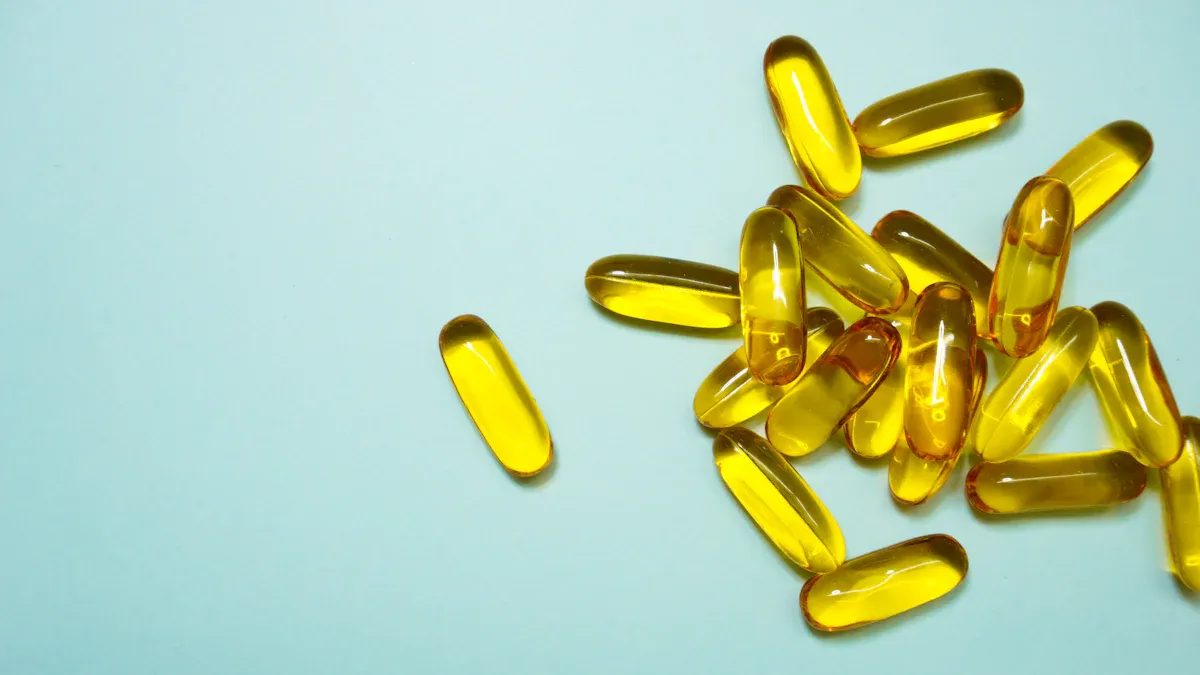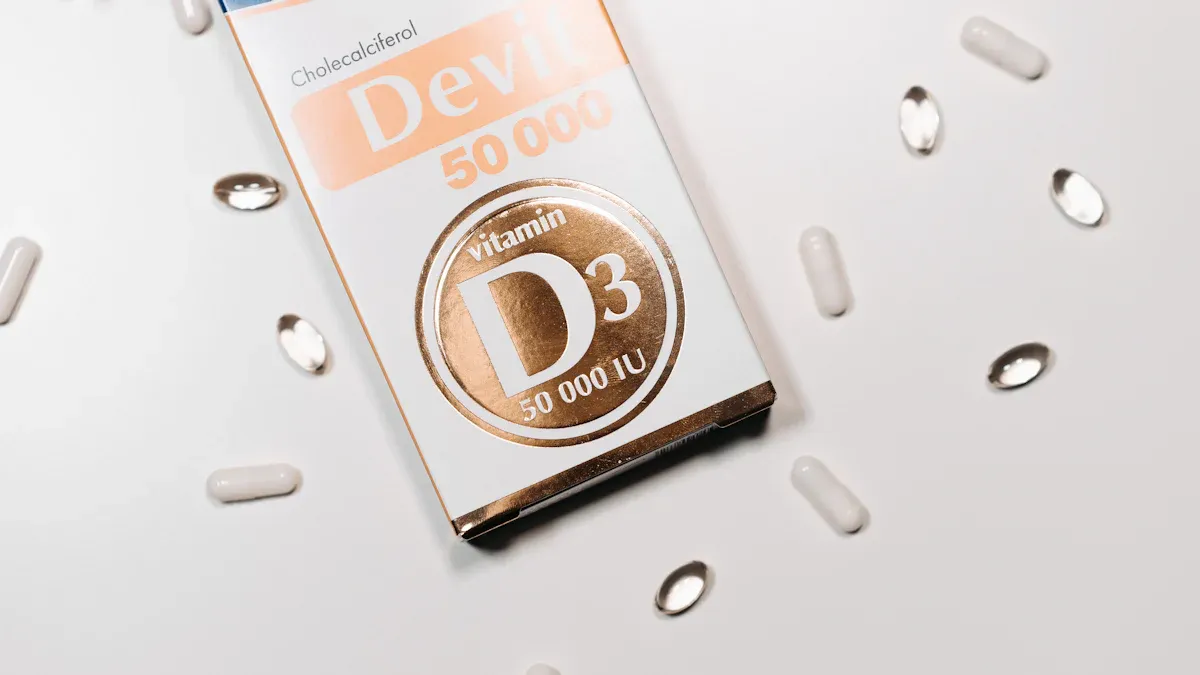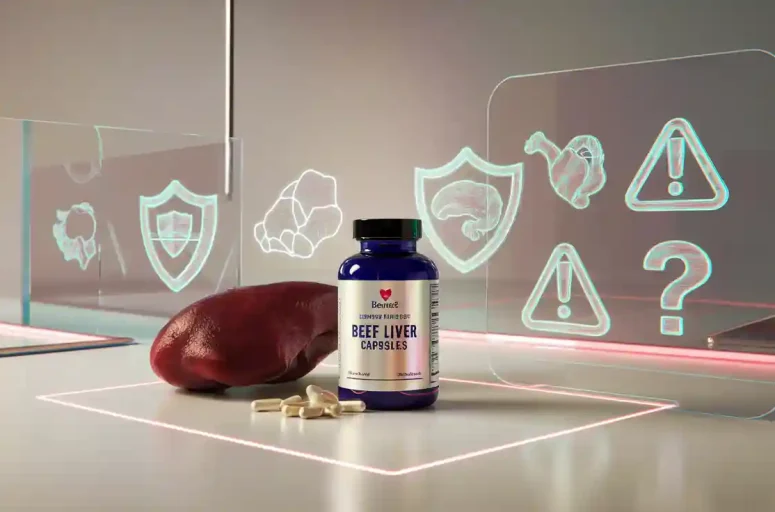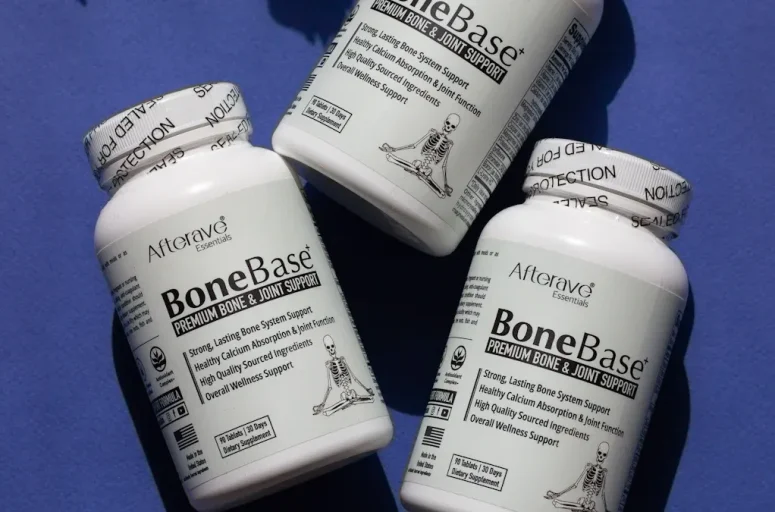
Understanding the appropriate vitamin D3 dosage is important. This nutrient helps your bones, immune system, and mood stay healthy. Low vitamin D can raise cancer risks by 30-50%. However, taking too much can harm your kidneys or cause hypercalcemia. Around 15.7% of people worldwide have low vitamin D. Women and individuals in poorer areas are affected the most. By adhering to the right vitamin D3 dosage, you can avoid problems and enjoy the benefits of this “sunshine vitamin.”
Key Takeaways
Vitamin D3 helps keep bones strong, boosts immunity, and lifts mood.
Daily Vitamin D3 needs depend on age: babies need 400 IU, adults need 600 IU, and people over 70 need 800 IU.
The sun gives Vitamin D3 naturally; try 5-30 minutes outside a few times a week.
Foods like fatty fish, egg yolks, milk, and cereals have Vitamin D3.
Low Vitamin D3 can cause tiredness, bone aches, and weak immunity.
Blood tests can check Vitamin D3 levels to avoid low amounts.
Too much Vitamin D3 can harm your health; follow the right dose.
Talk to your doctor before taking supplements, especially if you’re not well.
What is Vitamin D3?
The role of Vitamin D3 in the body
Vitamin D3 is important for keeping your body strong. It helps your body take in calcium, which makes bones and teeth stronger. Without enough Vitamin D3, bones can become weak and break easily. This vitamin also helps your immune system fight off sickness better.
Research shows Vitamin D3 may help prevent long-term illnesses. For example, the VITAL study found taking 2,000 IU daily lowered autoimmune disease risk by 22% in five years. Another study showed men with low Vitamin D were twice as likely to have heart attacks as those with higher levels. Higher Vitamin D levels are also linked to fewer cases of Type 2 diabetes. Experts think this is because Vitamin D helps insulin work better and lowers inflammation.
Differences between Vitamin D3 and Vitamin D2
There are two main types of Vitamin D: D3 (cholecalciferol) and D2 (ergocalciferol). Both are fat-soluble vitamins but come from different sources:
Vitamin D3: Found in animal foods like salmon, cod, and egg yolks. Your skin also makes it when exposed to sunlight.
Vitamin D2: Found in plant foods like mushrooms and made by exposing fungi to light.
Studies show Vitamin D3 works better than D2 at raising and keeping Vitamin D levels in your blood. For example, research found D3 increases blood Vitamin D levels more than D2, especially when taken in a large dose. This makes D3 the best choice for supplements.
Why Vitamin D3 is called the “sunshine vitamin”
Vitamin D3 is called the “sunshine vitamin” because your body makes it when sunlight hits your skin. UV rays start a reaction in your skin that creates Vitamin D3. How much sunlight you need depends on where you live and the season.
For example, in Miami during summer, three minutes of sun can give enough Vitamin D3. In Boston during winter, you might need 23 minutes. People in northern areas or places with little sunlight are more likely to lack Vitamin D3. Using sunscreen, having darker skin, or staying indoors a lot can also lower how much Vitamin D3 your body makes.
By knowing these things, you can make sure you get enough Vitamin D3. You can get it from sunlight, food, or supplements.
Vitamin D3 dosage guidelines
Recommended daily intake by age
Infants and children
Babies and kids need enough vitamin D3 to grow strong. Babies under 12 months need 10 mcg (400 IU) daily. Kids aged 1–13 years need 15 mcg (600 IU) each day. These amounts stop rickets, a disease that weakens bones in kids.
Here’s a simple table for daily vitamin D3 needs by age:
Age | Daily Amount (mcg) | Daily Amount (IU) |
|---|---|---|
0-12 months | 10 mcg | 400 IU |
1–13 years | 15 mcg | 600 IU |
Adults
Adults aged 19–50 years need 15 mcg (600 IU) of vitamin D3 daily. This helps keep bones strong and supports the immune system. For adults over 50, getting enough is even more important. As you age, bones lose strength naturally.
Seniors
People over 70 years need 20 mcg (800 IU) daily. This higher amount lowers the chance of weak bones and fractures. Older skin makes less vitamin D3 from sunlight, so food and supplements are key.

Dosage adjustments for health conditions
Bone health concerns
If your bones are weak or you have osteoporosis, doctors may suggest more vitamin D3. Adults might take 50,000 IU weekly for 8 weeks or 6,000 IU daily. After levels improve, a daily dose of 1,500–2,000 IU is often recommended.
Autoimmune diseases
Vitamin D3 helps control the immune system. For autoimmune problems, higher doses may help. Studies show 2,000 IU daily can lower inflammation and boost immune health.
Pregnancy and breastfeeding
Pregnant and breastfeeding women need 15 mcg (600 IU) daily. This helps the baby’s bones grow and keeps the mother healthy. If there’s a deficiency, doctors may suggest higher doses.
Factors influencing Vitamin D3 needs
Sunlight exposure and geographic location
Where you live and how much sun you get affect your vitamin D3 levels. People in northern areas or places with little sun often need supplements. Levels also drop in winter, making it harder to get enough naturally.
Skin tone and melanin levels
Darker skin has more melanin, which blocks vitamin D3 production from sunlight. If you have darker skin, you may need more sun or higher doses of vitamin D3 to stay healthy.
Dietary habits and lifestyle
What you eat and how you live affect your vitamin D3 levels. Vegans and vegetarians may miss out on foods like fish and eggs. Staying indoors or using too much sunscreen can also lower your vitamin D3, so supplements might be needed.
Health benefits of Vitamin D3

Bone health and calcium absorption
Vitamin D3 helps keep your bones strong and healthy. It allows your body to absorb calcium, which builds strong bones. Without enough Vitamin D3, your body can’t use calcium well. This can lead to weak bones, fractures, or osteoporosis.
Research shows Vitamin D3 lowers the risk of broken bones. For example:
A study found taking over 400 IU daily cut fracture risk by 20% in people 65 and older.
Another study showed higher Vitamin D levels improve bone strength in most people.
Combining Vitamin D3 with calcium makes bones stronger, especially in older adults. If you’re at risk for weak bones, like seniors or those with osteoporosis, getting enough Vitamin D3 is very important.
Immune system support
Vitamin D3 boosts your immune system, helping you fight sickness. It helps your body make proteins that kill harmful germs. Studies show Vitamin D3 can lower the chance of getting infections or immune diseases.
For example:
Study Type | Findings | Population | Supplementation | Outcome |
|---|---|---|---|---|
Randomized Controlled Trial | Flu rates dropped by 40% in kids taking Vitamin D | 340 Japanese school children | 1,200 IU/day | Fewer flu cases |
Meta-analysis | Regular Vitamin D lowers the risk of infections | Various | Daily/Weekly | Fewer infections |
VITAL Trial | Autoimmune diseases dropped by 22% | 25,000 adults aged 50+ | 2,000 IU/day | Fewer autoimmune diseases |
These studies show how Vitamin D3 helps your immune system. If you don’t get much sunlight or have low Vitamin D3, you might need supplements to stay healthy.
Mental health and mood regulation
Vitamin D3 also affects your mood and mental health. Low Vitamin D3 levels are linked to feeling sad or anxious. Experts think Vitamin D3 helps the brain by controlling mood-related chemicals like serotonin.
Here are some findings:
A 2017 study found low Vitamin D levels may cause depression, and supplements could help.
Another review showed people with more Vitamin D had less depression, but more research is needed.
A 2020 study suggested Vitamin D might ease anxiety symptoms.
While more proof is needed, getting enough Vitamin D3 might help your mood. If you often feel sad or worried, checking your Vitamin D3 levels could be helpful.
Chronic disease prevention
Heart health
Vitamin D3 is important for keeping your heart strong. It helps control blood pressure and keeps blood vessels working well. Low Vitamin D3 levels can raise the chance of heart disease. Studies show people low in Vitamin D3 may have more heart attacks or strokes.
One way Vitamin D3 helps is by lowering inflammation. Too much inflammation can harm arteries and cause heart issues. Research also shows Vitamin D3 might lower bad cholesterol (LDL) and improve heart health overall.
To keep your heart healthy, make sure you get enough Vitamin D3. Spend time in the sun, eat foods with Vitamin D3, or take supplements.
Diabetes prevention
Vitamin D3 can help lower the risk of Type 2 diabetes. It helps your body use insulin better, which controls blood sugar. If your body doesn’t use insulin well, blood sugar can get too high, causing diabetes.
Studies show higher Vitamin D levels may lower diabetes risk. For example, one study found taking 4,000 IU of Vitamin D3 daily helped people with prediabetes avoid diabetes. Another study showed Vitamin D3 reduces inflammation, which can lead to diabetes.
If diabetes runs in your family or you have high blood sugar, check your Vitamin D3 levels. Adding Vitamin D3 to your routine may help control blood sugar and improve health.
Cancer prevention
Vitamin D3 may help lower the risk of some cancers. It controls how cells grow and stops them from growing too much, which can cause tumors. Research links higher Vitamin D levels to lower risks of colon, breast, and prostate cancers.
For example, a study found women with more Vitamin D had a 50% lower chance of breast cancer. Another study showed people with enough Vitamin D were less likely to get colorectal cancer.
To help your body fight cancer, make sure you get enough Vitamin D3. Sunlight, a good diet, and supplements can help keep your levels healthy.
Tip: Ask your doctor about your Vitamin D3 levels, especially if cancer runs in your family. Preventing problems early can really help.
Signs of Vitamin D3 deficiency
Symptoms of deficiency
Feeling tired and weak
Do you feel tired a lot? Low Vitamin D3 could be why. Your body needs Vitamin D3 to make energy. Without it, you might feel exhausted even after sleeping well. Studies show tiredness is an early sign of low Vitamin D3. If you often feel weak, check your Vitamin D3 levels.
Bone and muscle pain
Vitamin D3 helps keep your bones and muscles strong. When levels are low, you may feel pain in your bones or muscles. This happens because your body can’t absorb enough calcium, which is needed for healthy bones. Over time, this can cause problems like soft bones in adults (osteomalacia) or weak bones in kids (rickets). If you have ongoing pain, you might need more Vitamin D3.
Getting sick often
Do you catch colds or infections a lot? A weak immune system might be the reason. Vitamin D3 helps your body fight germs. Research shows people with low Vitamin D3 get sick more often. For example, a study of 14,000 adults found those with Vitamin D3 below 30 ng/ml were 58% more likely to have a respiratory infection. Keeping your Vitamin D3 levels up can help you stay healthy.
Testing for Vitamin D3 levels
Blood tests and why they matter
The best way to check your Vitamin D3 is with a blood test. Doctors measure something called serum 25-hydroxyvitamin D (25[OH]D). This shows how much Vitamin D3 is in your body. Here’s what the results mean:
Testing Method | What It Means | Notes |
|---|---|---|
Serum 25-hydroxyvitamin D (25[OH]D) | 12-< 20 ng/mL: Low levels; < 12 ng/mL: Very low levels | Doctors may also check PTH levels. Testing is key for high-risk groups. |
If your levels are low, your doctor might suggest supplements or changes to your diet and lifestyle.
Healthy Vitamin D3 levels
What are good Vitamin D3 levels? Experts say 20–50 ng/mL is ideal for most people. Levels below 20 ng/mL mean you’re deficient, and levels over 50 ng/mL could be harmful.
Here’s a table showing how common Vitamin D3 deficiency is worldwide:
Deficiency Level | Percentage (%) | Confidence Interval (95% CrI) |
|---|---|---|
Serum 25(OH)D < 30 nmol/L | 13.7–17.8 | |
Serum 25(OH)D < 50 nmol/L | 47.9 | 44.9–50.9 |
Serum 25(OH)D < 75 nmol/L | 76.6 | 74.0–79.1 |
If your levels are too low, acting early can stop serious health problems. Regular testing helps you manage your Vitamin D3 needs.
Tip: If you live in a place with little sunlight or have darker skin, get tested every year. Catching low levels early can improve your health.
Sources of Vitamin D3

Sunlight as a source
Recommended sun exposure
Sunlight is a great way to get Vitamin D3. When UVB rays touch your skin, your body makes Vitamin D3. Try to get 5–30 minutes of sunlight daily or at least twice a week. Focus on areas like your face, arms, and legs between 10 a.m. and 4 p.m. Skip sunscreen during this time to help your body make more Vitamin D3.
If you have light skin, 8–10 minutes of midday sun in spring or summer is usually enough. In winter, you might need up to 2 hours if only a small part of your skin is exposed.
Exposure Time | Best Conditions |
|---|---|
5–30 minutes | Daily or twice weekly, 10 a.m.–4 p.m., no sunscreen |
Tanning bed use | Moderate use with 2%–6% UVB radiation can also help make Vitamin D3 |
Factors affecting Vitamin D3 synthesis
Many things affect how much Vitamin D3 your body makes from sunlight. Where you live matters. If you’re far from the equator, winter sunlight may not be strong enough to make Vitamin D3. Skin color also plays a role. Darker skin has more melanin, which lowers Vitamin D3 production. Age is another factor. Older people make less Vitamin D3 because their skin doesn’t work as well.
Dietary sources
Foods rich in Vitamin D3
Only a few foods naturally have Vitamin D3. Fatty fish like salmon, trout, and mackerel are great sources. Cod liver oil is another good option. Egg yolks and beef liver have smaller amounts.
Food | Micrograms (mcg) per serving | International Units (IU) per serving | Percent DV* |
|---|---|---|---|
Cod liver oil, 1 tablespoon | 34.0 | 1,360 | 170 |
Trout (rainbow), farmed, cooked, 3 ounces | 16.2 | 645 | 81 |
Salmon (sockeye), cooked, 3 ounces | 14.2 | 570 | 71 |
Mushrooms, UV-exposed, ½ cup | 9.2 | 366 | 46 |
Egg, 1 large, scrambled | 1.1 | 44 | 6 |

Fortified foods
Fortified foods are a big source of Vitamin D3 for many people. In the U.S., most milk has about 3 mcg (120 IU) of Vitamin D per cup. Plant-based milks like soy, almond, and oat are often fortified too. Some cereals and orange juice also have added Vitamin D.
Fortified foods are the main source of Vitamin D in the U.S.
Common fortified items include milk, plant-based drinks, and cereals.
These foods help when natural sources are not enough.
Supplements
Types of Vitamin D3 supplements
Supplements are a dependable way to get enough Vitamin D3, especially if you don’t get enough from sunlight or food. They come as capsules, tablets, or liquid drops. Some supplements also include calcium to help keep bones strong.
Choosing the right supplement
Pick a supplement with cholecalciferol (Vitamin D3) because it works better than Vitamin D2. Check the dosage to match your needs. For general health, 600–800 IU daily is usually enough. If you’re deficient, your doctor might suggest higher doses. Always choose a trusted brand for safety and quality.
Tip: Talk to your doctor before starting supplements, especially if you take medicine or have health issues.
Risks of Vitamin D3 overdose
Taking too much Vitamin D3 can cause serious health problems. Overdose, called hypervitaminosis D, happens when you take too many supplements. This can lead to bad symptoms and long-term issues.
Symptoms of toxicity
Feeling sick and throwing up
Too much Vitamin D3 can make you feel sick and vomit often. High Vitamin D3 levels raise calcium in your blood, which upsets digestion. You might also lose weight and become dehydrated.
Kidney problems
Excess Vitamin D3 can hurt your kidneys. High calcium levels can cause kidney stones or kidney damage. This makes it hard for your kidneys to clean waste from your body.
Too much calcium in blood
Hypercalcemia means there’s too much calcium in your blood. It can make you feel tired, confused, or have uneven heartbeats. Severe cases need quick medical help.
Note: Studies show overdosing on Vitamin D3 can be dangerous. People who take high doses or mislabeled supplements may get hypervitaminosis D. Common signs include vomiting, dehydration, and kidney damage.
Symptom/Condition | Severity/Measurement |
|---|---|
Vomiting | Yes |
Weight loss | |
Dehydration | Yes |
Mental health issues | Yes |
Hypercalcemia | Calcium: 11.67 mg/dL |
Ionizable calcium | 6.51 mg/dL |
Kidney damage | Yes |
Parathyroid hormone (PTH) | 13.58 pg/mL |
Low hemoglobin (Hb) | 8.2 g/dL |
High white blood cells | 61,000/mm3 |
Low platelets | 23,600/mm3 |
High urea | 101.7 mg/dL |
High creatinine | 3.97 mg/dL |
Preventing Vitamin D3 toxicity
Stick to safe amounts
Follow the recommended Vitamin D3 dose to avoid overdose. Most adults need 600–800 IU daily. If your doctor gives you a higher dose, follow their advice carefully. Don’t take large doses on your own.
Check your blood levels
Blood tests can help keep your Vitamin D3 levels safe. Doctors check your serum 25-hydroxyvitamin D to make sure it’s between 20–50 ng/mL. If it’s too high, they may change your supplements or diet.
Tip: Talk to a doctor before starting or changing Vitamin D3 supplements. Keeping track of your intake can stop health problems.
Vitamin D3 is important for keeping your body healthy. It makes bones stronger, helps your immune system, and lowers the chance of serious diseases. Studies show low Vitamin D can lead to broken bones, heart problems, and some cancers. Most people need 400–800 IU daily, but some may need more. To stay well, follow the right dosage and ask your doctor for advice. You can get Vitamin D3 from sunlight, healthy foods, or supplements. These simple steps help your body get what it needs.
FAQ
1. How can you tell if you need more Vitamin D3?
You might feel tired, weak, or have muscle pain. Frequent illnesses could also be a sign. A blood test can confirm if your levels are low.
2. Can you get enough Vitamin D3 from sunlight alone?
It depends on where you live, your skin tone, and how much time you spend outside. If sunlight is limited, you may need supplements or fortified foods.
3. What’s the best time to take Vitamin D3 supplements?
Take Vitamin D3 with meals that contain fat. This helps your body absorb it better. Morning or lunchtime works well for most people.
4. Are Vitamin D3 supplements safe for children?
Yes, they are safe when taken in the right amounts. Follow the recommended daily intake for your child’s age or consult a pediatrician.
5. Can Vitamin D3 help with seasonal depression?
Studies suggest Vitamin D3 may improve mood during winter months. Low sunlight can reduce your Vitamin D3 levels, so supplements might help.
6. What foods are rich in Vitamin D3?
Fatty fish like salmon and mackerel, egg yolks, and fortified foods like milk and cereals are good sources. Cod liver oil is also an excellent option.
7. How do you avoid Vitamin D3 overdose?
Stick to the recommended daily dose. Avoid taking high-dose supplements without medical advice. Regular blood tests can help monitor your levels.
8. Is Vitamin D3 better than Vitamin D2?
Yes, Vitamin D3 raises blood levels more effectively than D2. It’s the preferred choice for supplements and maintaining healthy levels.



1 comment